Meet the weaponized propaganda AI that knows you better than you know yourself
I read a lot of articles and reports every day but this one by Jessica Hall for ExtremeTech is one I found fascinating and thought might also be of interest to subscribers. Here is a section:
More data meant a better guess, of course. Seventy “likes” were enough to make the AI’s prediction of a person’s OCEAN score better than their friends could do, 150 made it more accurate than what their parents got, and 300 “likes” could do better predicting a person’s OCEAN score than the best human judge of a person: their spouse. More “likes” could even surpass what a person thought they knew about themselves, by predicting their OCEAN score closer than the person’s own best estimate of what their score would be.
It goes the other way, too. To a database, a person’s name and entries from their profile are just nodes in an n-dimensional space, and the connections between nodes aren’t necessarily directional. You can class individuals by similarities in the data, or you can search the data for individuals who fit into a class. It’s as simple as doing an alphabetical sort in an Excel sheet.
Was granularity in marketing the deciding factor in the US presidential election? It is often said that presidential elections are won by those who master new media whether that was JFK’s use of television or Obama’s use of social media. Trump certainly appears to have employed highly targeted messages aimed at very specific demographics to sway voter intentions in pivotal states. This also helps to answer the question which baffled onlookers during the campaign, how was he getting such traction by underspending his rival?
Another question that should now be asked is whether the bombastic approach to just about everything which played so well for his campaign is exactly what the psychographics dictated would work best? That represents quite the challenge for the transition to governing and might explain why we are now seeing some moderation of attitude with the next Presidential election four years away.
Politics is important but commerce is so much larger and using this kind of data to influence buying decisions represents significant earning potential. The types of companies that own the large datasets on which this kind of marketing relies are the surest winners from this evolution which is why companies like Facebook, Alphabet, Amazon, Apple, Netflix, Microsoft and Priceline, have tended to outperform.
.png)
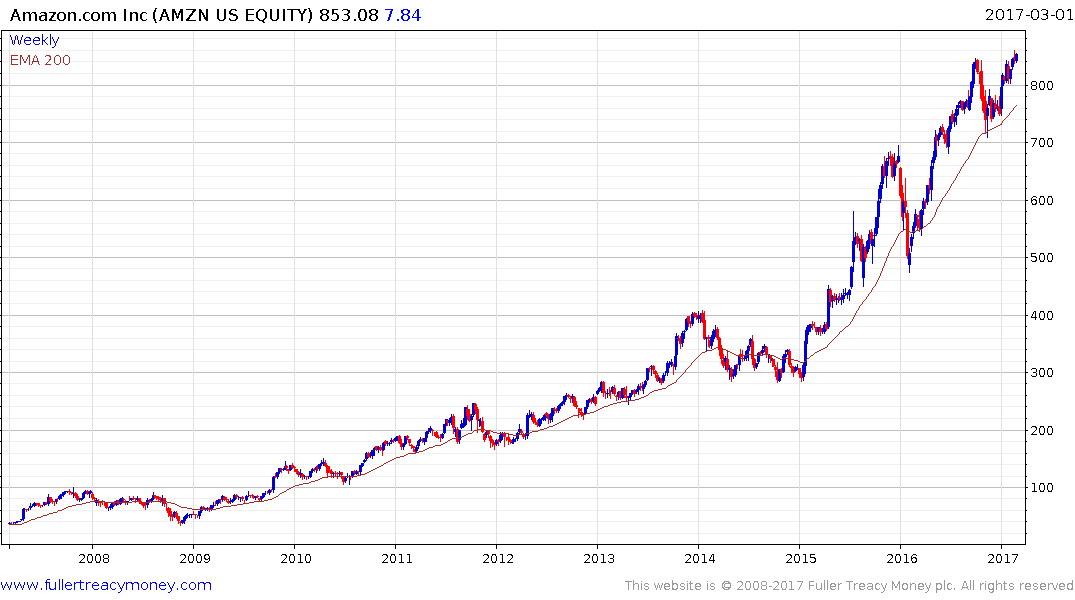
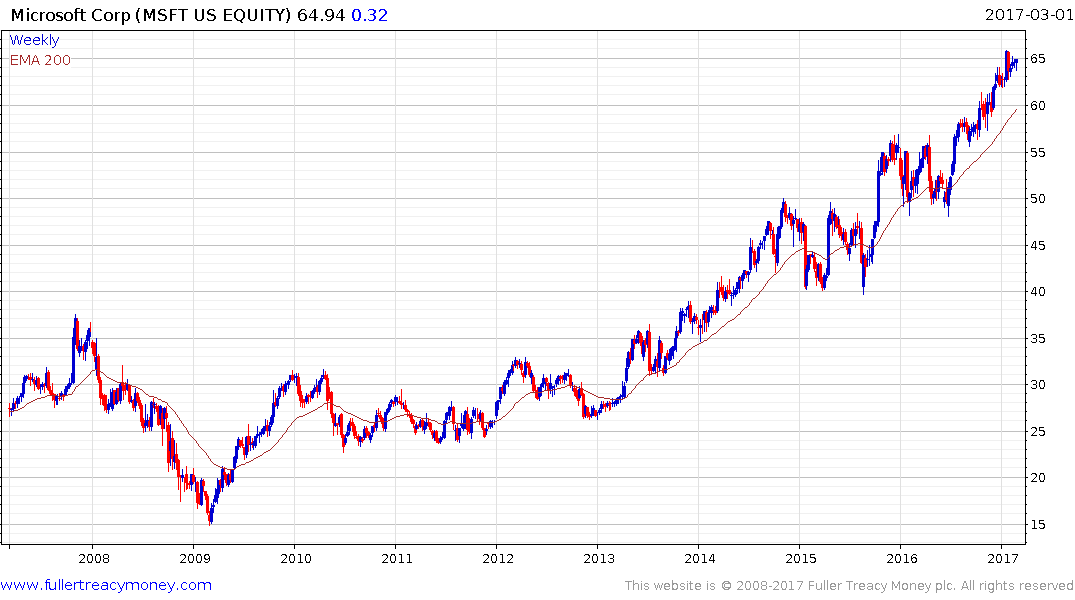
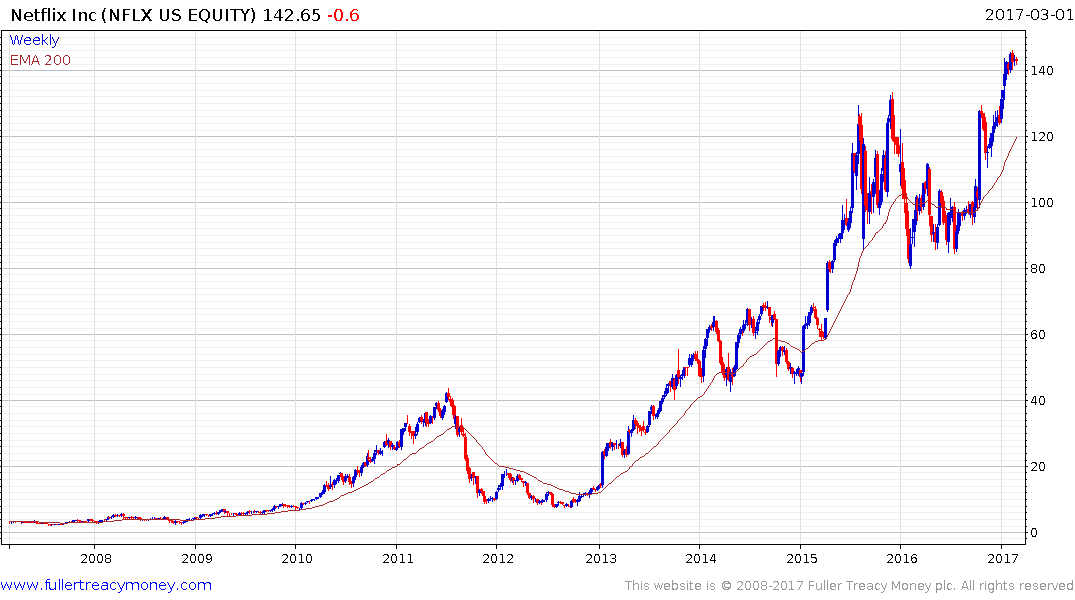
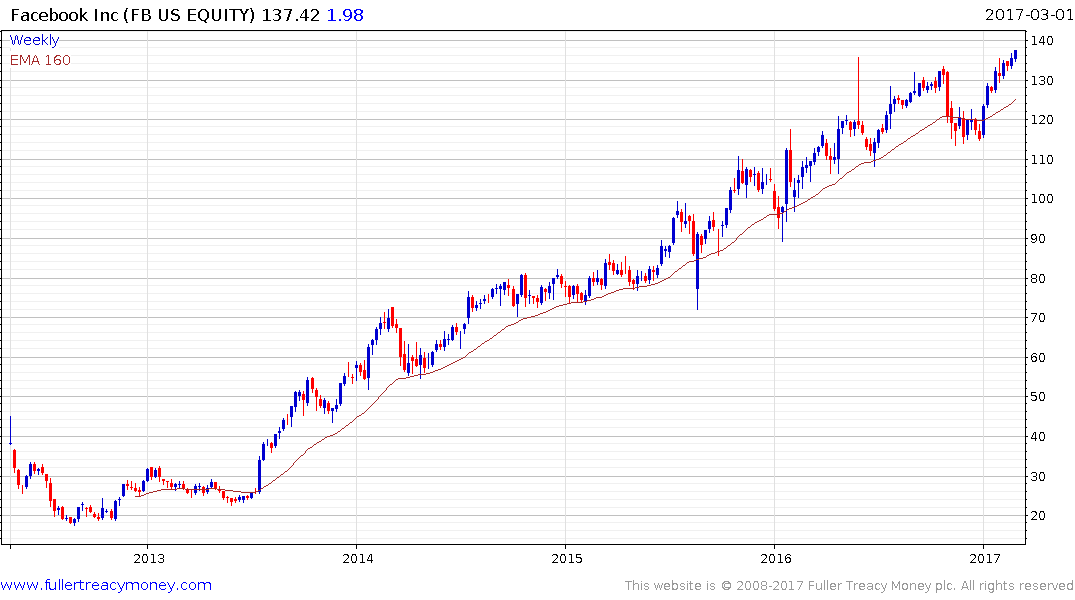
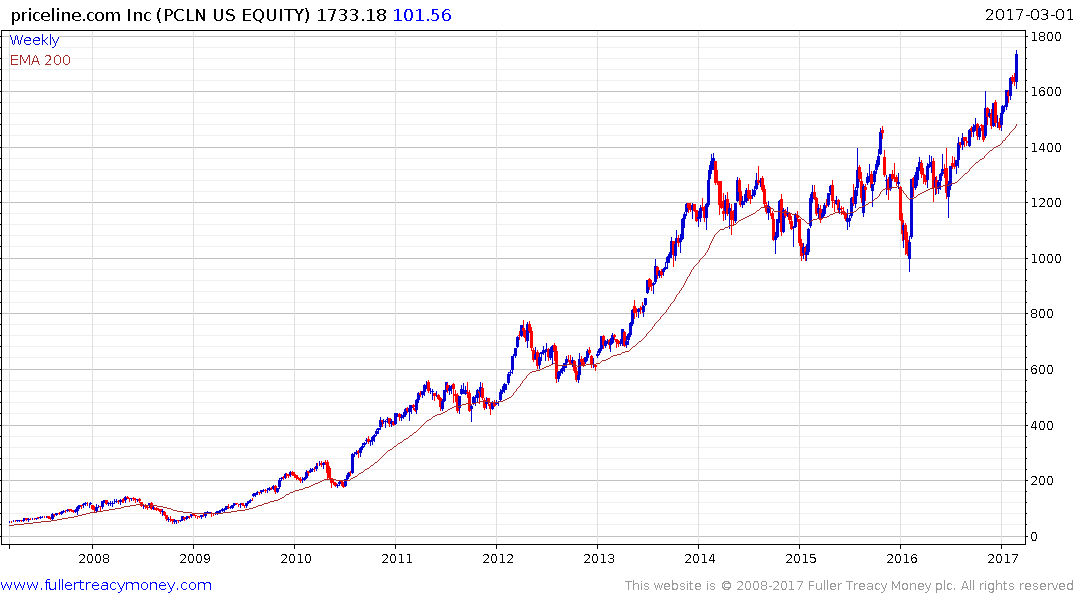
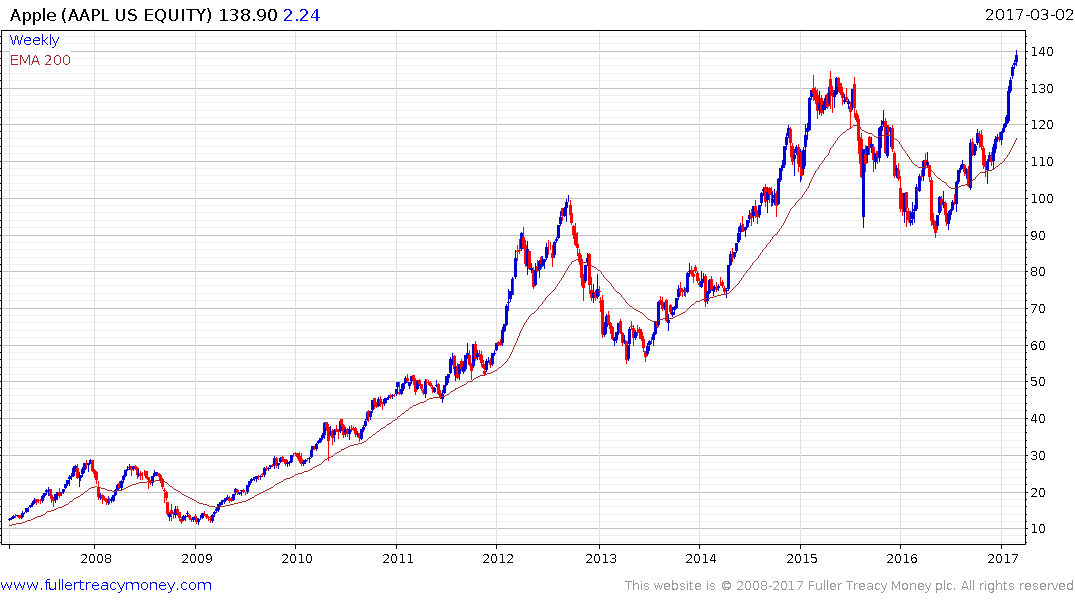
The bigger point of course is that this trend is specifically targeted at online retail. Brick and mortar stores are competing at a distinct disadvantage. Going to the mall today is more about experiences and people tend to spend money on food and services while maybe trying items on but ordering them online at a potentially better price.
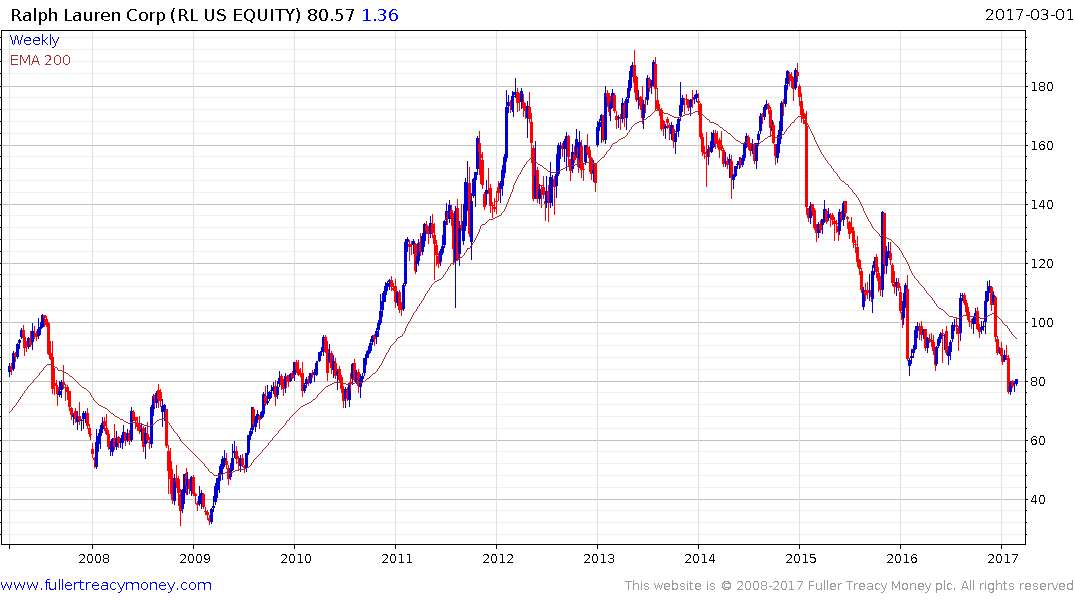
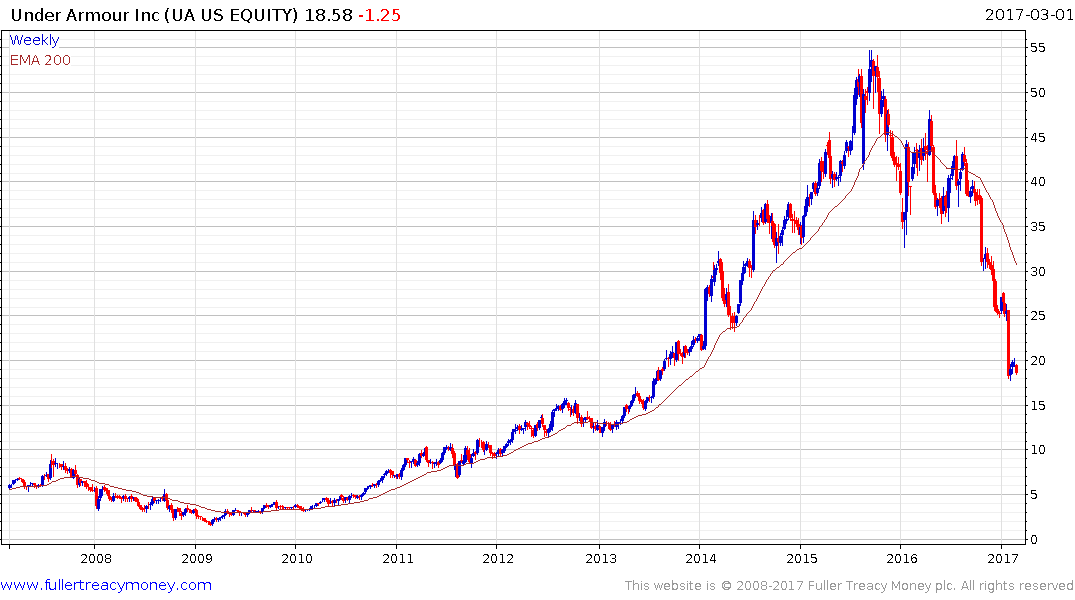
That has forced retailers to respond. When in London last month Mrs. Treacy wanted me to purchase two kid’s swimsuits from Monsoon, but I found they only carry a small number of items in their physical stores; keeping the majority of the merchandise for the online store. Under Armour and Ralph Lauren remain in significant downtrends as they attempt to beef up their online offerings at the expense of physical locations. .
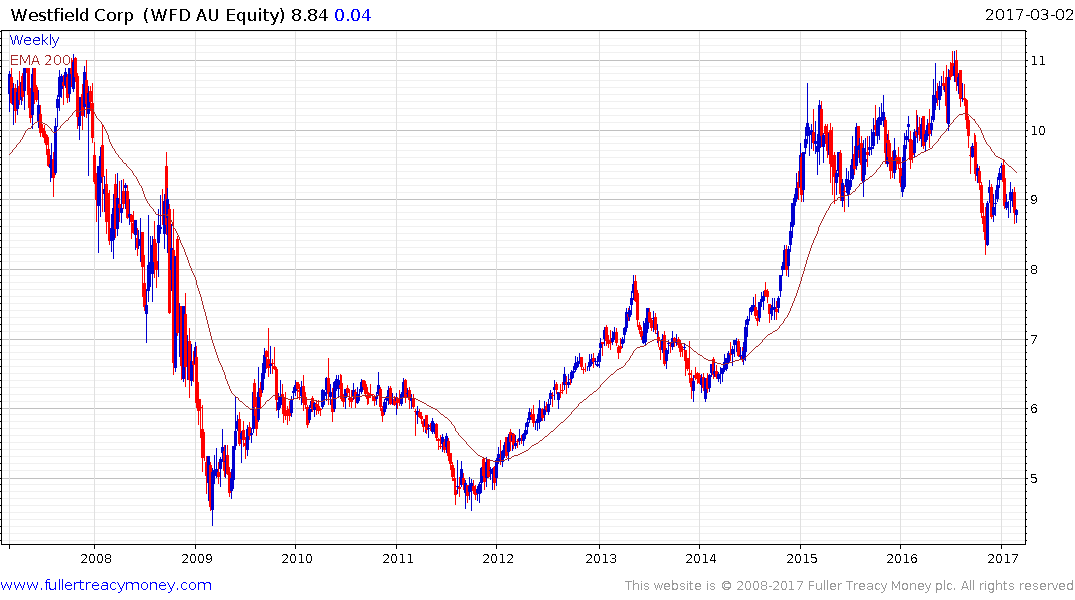
Australian listed Westfield is an interesting microcosm of the challenges facing physical locations. At least in Los Angeles it owns some of the most appealing shopping malls which consistently attract large number of consumers. Nevertheless it is competing against the growth of online. The Dubai and Emirates malls, on the other hand, were full when I visited two weeks ago but they are trading in a tax free environment and have invested heavily in experiences like ice skating rinks, aquariums etc.
Westfield’s share pulled back sharply in late 2016 to break the medium-term progression of higher reaction lows and encountered resistance in the region of the trend mean in January. A sustained move back above the 200-day MA is now the minimum requirement to signal a return to demand dominance.


